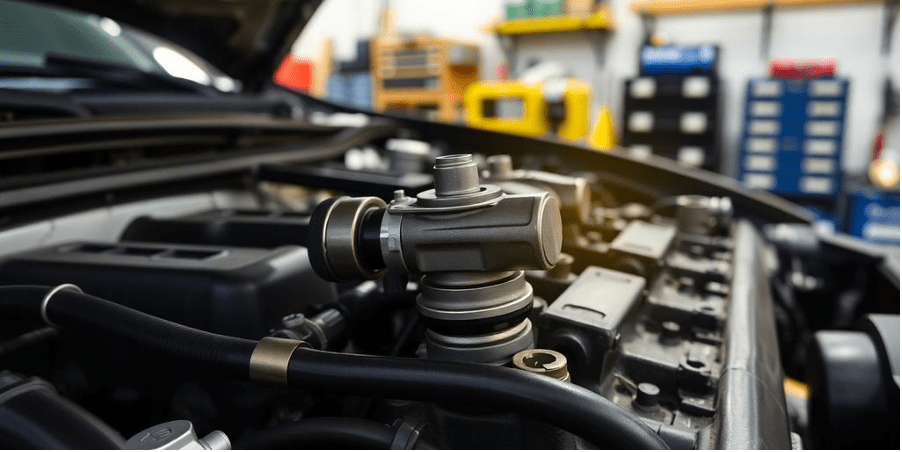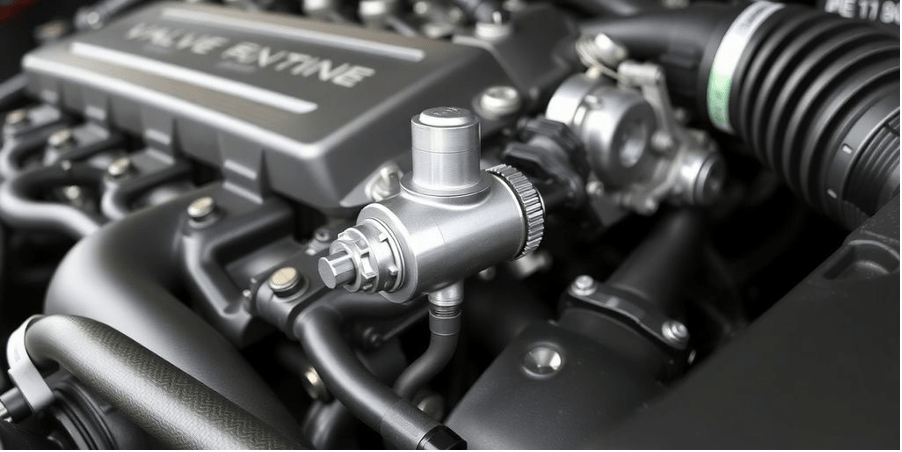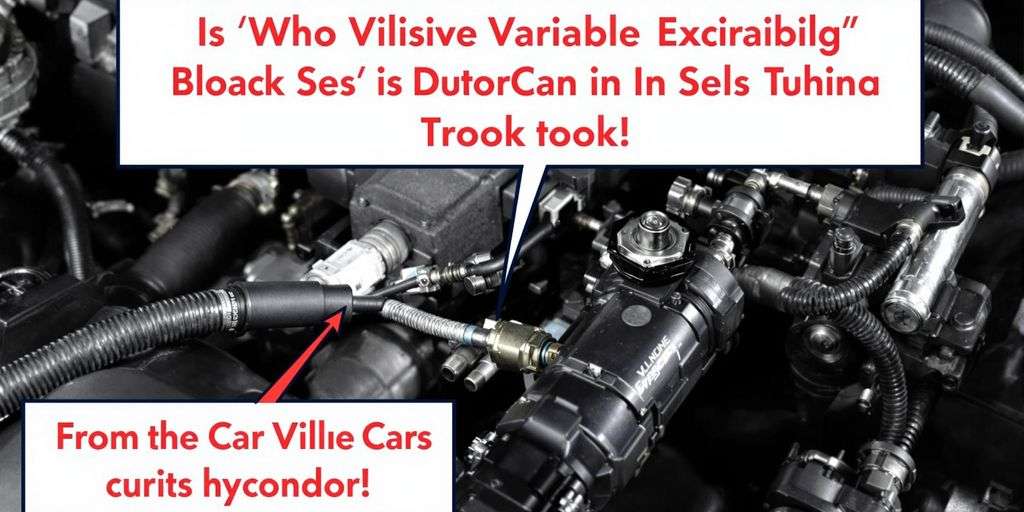Key Takeaways
- Understand what a variable valve timing solenoid does and its impact on your car.
- Decide whether to fix the solenoid or sell the car as-is.
- Research the market to set a fair price, considering repair costs.
- Be honest in your advertisements about the car's condition.
- Familiarize yourself with legal requirements when selling a car with issues.
Understanding the Variable Valve Timing Solenoid Issue
What is a Variable Valve Timing Solenoid?
The variable valve timing (VVT) solenoid is a small but critical component in your car's engine, responsible for optimizing the timing of the opening and closing of the engine's intake and exhaust valves. This helps improve engine efficiency, performance, and fuel economy. Think of it as the maestro of your engine's performance, ensuring everything runs in harmony. When it functions correctly, your engine breathes better, delivering the power you need when you hit the gas pedal.
Common Symptoms of a Malfunctioning Solenoid
When a VVT solenoid starts to fail, your car will likely give you some warning signs. Here are a few symptoms to watch out for:
- Rough Idling: If your car feels like it's shivering when you're stopped at a light, it could be due to a faulty VVT solenoid.
- Engine Misfires: Misfiring can occur when the solenoid isn't adjusting the valve timing correctly, leading to a rough ride.
- Check Engine Light: This handy little light can illuminate for a variety of reasons, but a bad VVT solenoid might be one of them.
These symptoms are not exclusive to VVT solenoid issues, so it's always a good idea to get a professional diagnosis.
Impact on Vehicle Performance
A malfunctioning VVT solenoid can significantly affect your car's performance. You might notice a decrease in fuel efficiency, sluggish acceleration, or even trouble starting the engine. In some cases, a faulty Mazda camshaft timing oil control valve can cause similar issues such as rough idling and engine misfires. Ignoring these signs can lead to more severe engine problems down the road, so addressing them early is crucial.
It's essential to keep your car's VVT solenoid in good working order to maintain optimal engine performance. Regular maintenance and timely repairs can prevent minor issues from becoming major headaches.
Preparing Your Car for Sale with a Malfunctioning Solenoid

Assessing the Extent of the Problem
Before you even think about selling, get a good handle on how bad the solenoid issue is. This means popping the hood and maybe even getting a mechanic to take a look. They can tell you if it's just a minor hiccup or something bigger. If you’ve got that P0012 code flashing, it might mean your solenoid is clogged or worse. Knowing the specifics can help you decide your next steps.
Gathering Necessary Documentation
Once you understand the problem, gather all the paperwork. This includes maintenance records, repair estimates, and any warranties. Having a complete set of documents can make buyers feel more comfortable. It shows you’ve been upfront and honest about the car’s history. Plus, it helps in discussions about price and condition.
Deciding on Repairs or Selling As-Is
Now comes the tricky part: do you fix the solenoid or sell the car as-is? If the repair costs are low and might boost your selling price, it could be worth it. But if fixing it is going to cost a fortune, you might just want to sell the car as-is. Consider these points:
- Cost of Repair: How much will it set you back?
- Time and Effort: Do you have the time to deal with repairs?
- Potential Increase in Sale Price: Will fixing it mean you can sell for a lot more?
Sometimes, selling a car “as-is” is the best move, especially if the repair costs are high. Just be sure to be clear about the issue with potential buyers. Honesty can save you a lot of hassle later on.
In the end, whether you choose to fix the solenoid or not, being prepared and informed is key to a smooth sale.
Setting a Competitive Price for Your Car
Researching Market Value
First things first, you gotta know what your car is actually worth. Check out similar models with the same make and year, and see what they're going for. Websites like Kelley Blue Book or Edmunds can give you a ballpark figure. Remember, your car's got a malfunctioning variable valve timing solenoid, so factor that in. It's like comparing apples to apples, but one apple's got a bruise.
Factoring in Repair Costs
Now, let's talk numbers. If a buyer's gotta fix that solenoid right off the bat, they'll want a discount. So, get a quote from a mechanic on how much the repair might cost. Subtract that from your car's market value. This gives you a fair price that reflects the condition of your car. And hey, if you’ve already got a repair estimate, even better! You can show it to potential buyers and be upfront about what they're dealing with.
Highlighting Other Vehicle Features
Don't just focus on the negatives. Your car's more than its broken parts. Maybe it’s got a killer sound system, low mileage, or new tires. Highlight these features in your listing to make it more appealing. Think of it as saying, “Sure, it needs a little work, but check out all this other cool stuff!” Buyers love a good deal, and showing them what else they're getting can help justify your asking price.
Setting a competitive price is all about finding that sweet spot where both you and the buyer feel like you're getting a fair shake. Be honest, be realistic, and don't be afraid to negotiate.
Marketing Strategies for Selling a Car with Issues
Crafting an Honest Advertisement
When selling a car with issues, honesty is your best policy. Clearly state the problem in your ad. This builds trust and sets the right expectations. Mention the malfunctioning variable valve timing solenoid and any other known problems. Buyers appreciate transparency, and it saves you from awkward negotiations later.
Utilizing Online Platforms
Take advantage of the internet to reach a larger audience. List your car on popular sites like Autotrader or Craigslist. Highlight features that are still in good condition to attract attention. Use high-quality photos to show the car's best angles, even if it has some flaws.
Reaching Out to Local Buyers
Sometimes, staying local is the way to go. You might find a buyer who’s looking for a project car or has the skills to fix it up. Consider putting up flyers in community centers or local auto shops. Word-of-mouth can also be powerful; tell friends and family you're selling your car.
Negotiating with Potential Buyers
Being Transparent About the Issue
When you're selling a car with a known problem, like a malfunctioning variable valve timing solenoid, honesty is your best policy. Transparency builds trust with potential buyers. Let them know upfront about the issue, and provide any relevant details or repair estimates you have. This way, buyers won't feel blindsided during the negotiation process. You might even use a VIN report to back up your claims and show any other minor issues that might affect the price.
Handling Lowball Offers
Expect some buyers to come in with low offers, especially when they know there's a problem with the car. It's important to stay calm and not take these offers personally. Consider these strategies:
- Counteroffer: If the initial offer is too low, make a reasonable counteroffer based on your research and the car's condition.
- Highlight Positives: Emphasize other features of the car that are in good condition or any recent maintenance you've done.
- Know Your Bottom Line: Before negotiations begin, decide on the lowest price you're willing to accept. This will help you stay firm when needed.
Finalizing the Sale
Once you and the buyer have agreed on a price, it's time to wrap things up. Prepare a bill of sale that includes details of the car and the agreed-upon price. Make sure both parties sign it. It's also important to properly transfer the title and any other necessary documents to the new owner. This not only completes the sale but also releases you from any future liability related to the vehicle.
Selling a car with an issue can be challenging, but with the right approach, you can still make a successful sale. Stay honest, be prepared for negotiations, and ensure all paperwork is in order to make the process as smooth as possible.
Legal Considerations When Selling a Car with Known Issues
Understanding Disclosure Laws
When you're selling a car with known problems, like a faulty variable valve timing solenoid, it's crucial to understand your legal obligations. Disclosure laws vary by state, but generally, you're required to inform potential buyers about any significant issues with the vehicle. This transparency not only builds trust but also protects you from potential legal trouble down the road.
Preparing a Bill of Sale
A well-drafted bill of sale is more than just a receipt; it's a legal document that outlines the terms of the sale. Be sure to include details about the car's condition, especially known issues. This document can serve as evidence that you were upfront about the car's problems, which can be crucial if disputes arise later.
Transferring Ownership Properly
Completing the transfer of ownership is a key step in selling your car. Make sure all the paperwork is filled out correctly and submitted to the DMV promptly. This not only finalizes the sale but also ensures that you're no longer liable for anything that happens with the vehicle after the sale.
Selling a car with known issues can be a bit tricky, but if you handle the legal aspects carefully, it can save you a lot of headaches later. Remember, being honest and thorough with your documentation is your best defense against future claims.
For more detailed information on the legalities involved in selling cars with defects, you can explore the complexities of selling defective cars. This guide emphasizes legal guidelines, necessary disclosures, and associated risks, helping you navigate the process smoothly.
Alternative Options to Selling Your Car

Trading In at a Dealership
Trading your car at a dealership is a convenient option if you want to avoid the hassle of selling it yourself. Dealerships will often accept cars with mechanical issues, but they'll likely offer you a lower trade-in value. It's important to be realistic about what you're offered since dealers need to cover repair costs and still make a profit. However, this can be a quick way to get rid of your car and possibly put the trade-in value toward a new purchase.
Selling to a Junkyard
If your car's issues are too costly to fix, selling it to a junkyard might be the best route. Junkyards buy vehicles primarily for parts and scrap metal, so they don't mind if your car isn't running perfectly. You might not get much money, but it's a straightforward way to dispose of a vehicle that's more trouble than it's worth. Before you sell, make sure to remove any personal belongings and check if the junkyard requires a title or any specific documentation.
Donating the Vehicle
Donating your car can be a rewarding alternative, especially if you're not concerned about getting cash in return. Many charities accept vehicle donations, even if they have mechanical problems. This option not only helps a good cause but might also provide you with a tax deduction. Check with the charity to ensure they accept cars in your car's condition and ask for a receipt for tax purposes.
Sometimes, letting go of a problematic car can feel like a relief. Whether you trade it in, sell it for scrap, or donate it, each option has its own set of benefits and considerations. Choose the path that aligns best with your goals and circumstances.
Wrapping It Up
Selling a car with a faulty variable valve timing solenoid might seem like a big hurdle, but it's totally doable with the right approach. First off, be upfront about the issue with potential buyers. Honesty can go a long way in building trust. You might want to consider getting a mechanic's opinion or even a written estimate for repairs. This can help buyers understand what they're dealing with and might make them more comfortable with the purchase. Pricing the car fairly, considering the cost of repairs, is also key. And hey, if you're not getting the bites you want, maybe think about fixing the solenoid yourself or lowering the price a bit more. At the end of the day, it's all about finding that balance between being honest and making the sale happen. Good luck out there!
Frequently Asked Questions
What does a Variable Valve Timing Solenoid do?
A Variable Valve Timing (VVT) Solenoid helps control the timing of the engine valves. It ensures they open and close at the right times, which helps the engine run smoothly and efficiently.
How can I tell if the VVT Solenoid is malfunctioning?
Common signs include rough engine idling, a drop in fuel efficiency, and the check engine light turning on. You might also notice a decrease in engine performance.
Should I fix the VVT Solenoid before selling my car?
It depends on the cost of repair and the value of your car. Sometimes fixing it can increase the car's value, but you might also choose to sell it as-is if the repair costs are too high.
How do I price a car with a faulty VVT Solenoid?
Research similar cars in your area and consider the cost of repairs. Be honest about the issue with potential buyers, and adjust the price accordingly.
What are the risks of selling a car with a known issue?
You need to disclose any known problems to avoid legal issues later. Being upfront with buyers builds trust and helps you avoid disputes.
Can I trade in a car with a bad VVT Solenoid?
Yes, you can trade it in at a dealership, but they might offer less money because of the needed repairs. It's often easier than selling privately, though.



